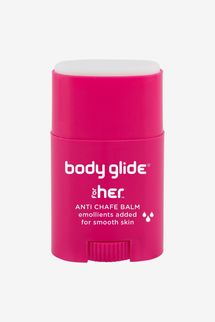
This column first ran in Valerie Monroe’s newsletter, How Not to F*ck Up Your Face, which you can subscribe to on Substack.
Q: Do you have any recommendations for underarm darkening/hyperpigmentation? My bloodwork is fine and my dermatologist isn’t concerned, as the discoloration seems to be from friction coupled with hormonal changes (hysterectomy with oophorectomy, followed by a year without HRT; then starting estrogen six months ago). But I’d like my underarms not to be so blotchy and dark.
The internet rabbit hole has been dug and it’s deep. WebMD says rub your pits with lemon slices. That seems painful for those of us who shave. If I can rub lemons on my pits, could I treat them with a gentle exfoliating serum? There are also claims (backed by semi-scientific studies?) that an unintentional but welcome effect of deodorants is an evening out of skin texture and color.
My galaxy brain is concerned that my switch years ago to a supposedly gentler, natural shaving cream — Dr. Bronner’s shave soap, a disconcertingly brown, slimy-thin concoction — has dyed the skin around my armpits (but curiously not my legs). Also, post-hysterectomy, my sweating is out of control. (I’m 44; had the hysterectomy at 39.) And I’ve had issues with yeast — in my underarms! — which was a new one for me, ugh.
Can you help pull me out of my rabbit hole?
A: Have you, dear Reader, thought about writing for Doctor Who? Your rabbit hole is remarkably descriptive. But your concerns are real. HNTFUYF DermDiva Dr. Heidi Waldorf has some suggestions.
First of all, have a dermatologist look at your exact condition. And if you have, “your dermatologist likely checked labs to rule out conditions associated with acanthosis nigricans (or AN),” she said. “AN is characterized by velvety-brown and thickened skin in the folds of the neck, underarms, and groin, and can be associated with diabetes, Cushing’s syndrome, thyroid disease, and, rarely, cancer. A more common condition is (less prominent) thickening and darkening of the skin due to friction and irritation. It’s seen more frequently in those with darker skin but can also be seen in Caucasians. Obesity and excessive sweating increase friction and, therefore, the condition.”
Your lemon instinct is correct, said Waldorf. That’s a hard NO! However, using an antiperspirant containing moisturizing ingredients can indeed help reduce discoloration. She recommends Even Tone antiperspirant deodorant.
“Shave using a moisturizing cream or oil and a fresh razor,” said Waldorf. “Avoid waxing to reduce aggravating the inflammation that’s causing the pigmentation. If you still have irritation, you could consider laser hair removal. Three to five treatments can reduce hair permanently by 70 to 90 percent.” (Additional treatments improve results.)
Waldorf continues: “The pigment can diminish over time as inflammation decreases. So, the first thing to do is reduce inflammation. As the situation improves, topicals may help further. Options include a moisturizer or serum containing niacinamide, soy, and polyhydroxy acids. Other useful ingredients: tranexamic acid, bakuchiol, and cysteamine.”
But be judicious, because any products applied to a skin-on-skin fold will have increased absorption and, therefore, can cause more irritation. (Val here: I’m not sure I’d go down this road with ingredients that could re-irritate. Also, how much stuff are you willing to use on your armpits? If you choose to add one of these, start slow and be patient. But I’m all for keeping it as simple as possible, so I might skip down to the next general advice and try one thing at a time.) Avoid irritating treatments like physical exfoliation and high-concentration retinoids, hydroquinone, and acids.
As a general rule, treat your underarm area gently. Wash with a moisture-replenishing cleanser that doesn’t strip the skin. Don’t scrub! Moisturize — even in and around the creases — with a hydrating but light product like Neutrogena Hydro Boost Hydrating Body Gel Cream.
Oh, but wait, there’s the yeast!
Yeast likes warm, moist places. When it’s in skin-on-skin creases like the groin, underarms, and under the breasts, it’s called intertrigo, said Waldorf. Although anyone can get it, it’s most common when folds are deep. A topical steroid, anti-fungal, or anti-bacterial cream may help (your physician best determines the choice).
And the sweating!
“Applying a ‘clinical strength’ antiperspirant before bed controls sweat better than just using a standard product in the morning,” Waldorf said. Look at products from Dove and Carpe that contain dimethicone and glycerin. Adding an absorbent powder can be helpful, but choose one without talc, which may contain asbestos.
If a topical antiperspirant isn’t sufficient, ask your dermatologist about noninvasive in-office procedures. Botox injections can reduce sweating for three to six months. (Some insurance may cover treatments if the hyperhidrosis — fancy for excessive sweating — has failed topicals and interferes with daily living.) Another in-office procedure called Brella is a three-minute application of a sweat-control patch to the underarms, which can reduce sweat for three to four months.
Finally, finally, finally! To reduce friction without aggravating sweat, Waldorf suggests an anti-chafing product like Body Glide.
I hope we’ve pulled you out of your rabbit hole, dear Reader, and into the light, where your choice of viable options (even if multifarious) is clear.
Originally published on July 30th












